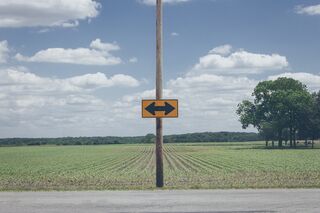Bias
4 Cognitive Biases That Can Impair Pandemic Decision-Making
When the stakes are high, we don’t always clearly see the pros and cons.
Posted December 23, 2021 Reviewed by Vanessa Lancaster
Key points
- During the COVID-19 pandemic, people often face difficult decisions between reducing risk and participating in valued activities.
- When an activity has clear benefits, it can lead us to downplay risks, while salient costs can heighten risk perceptions.
- Research on the optimism bias suggests that we tend to see ourselves as less vulnerable to risks than others.
- Studies of temporal discounting find that it’s tempting to choose immediate benefits over long-term benefits because the future is uncertain.

For many people, the COVID-19 pandemic has meant making an exhausting number of tough decisions daily. Should I attend that wedding? Take that vacation? Visit those relatives? We might think we have a good approach figured out, only to have it turned on its head by changes in the pandemic landscape.
Although public health guidelines can help us navigate these decisions, there’s still plenty left for us to figure out on our own. We have to determine what level of risk we can tolerate and whether the benefits of a given activity outweigh its costs. Often these choices come down to subjective judgments with no single right answer.
The problem is, several cognitive biases can skew our interpretation of the cost-benefit analysis in one direction or the other, making it harder for us to make rational decisions that align with our values. Here are four biases to look out for.
1. The perceived benefits of an activity can make it seem less risky.
In theory, costs and benefits should be evaluated independently and then weighed against one another. But research suggests that when the benefits of an activity are front and center in our minds, this may lead us to perceive the risks of the activity as lower than they actually are. For example, we might associate our annual holiday party with nothing but eating, drinking, and being merry, and therefore instinctively feel that nothing bad could happen there.
The solution is not to swing to the other side and catastrophize but to strive for a realistic assessment of the risks to help us make a more informed decision. We might account for factors like the number of people getting together, safety measures to be taken, and rates of local transmission—and then evaluate whether the benefits still outweigh the risks. In many cases, they still may, especially if the activity is deeply important to us and we’re taking good precautions, but at least then we go into it without illusions.
2. The perceived risks of an activity may be higher if we’ve witnessed the worst-case scenario firsthand.
The same research mentioned above suggests that a direct negative experience, such as seeing someone die from COVID-19, may impact risk perception in the opposite direction, leading to greater caution. Even in a situation where risk is objectively low, the horrific nature of the low probability outcome may be bad enough to make someone want to avoid it at all costs.
Adjusting for this bias does not require minimizing the horror of severe COVID-19; rather, it might involve giving adequate weight to the benefits of valued low-risk activities, such as connecting with loved ones in safe ways, especially when these activities help a person cope with the trauma they’ve experienced.
3. We assume bad things are more likely to happen to other people.
Optimism might seem like a good thing for mental health. Sometimes we’re pretty accurate about the risks of an activity in general, but less accurate about the risks to us personally. We think, “but that could never happen to me.” Still, research finds that unrealistic optimism can get us into trouble regarding health behavior because we might be less likely to take reasonable protective measures if we believe we’re less vulnerable than we actually are.
To correct for this bias, we could seek out information about the risks of severe illness for people in our age and health categories by consulting with our physician or accessing public health data like that provided by the CDC. These cold, hard statistics can be unpleasant to think about, but being honest with ourselves about the numbers can help us make decisions with clear eyes and avoid being blindsided later on.
We might also consider that even if we are, in fact, less vulnerable than others, our choices can have consequences for those who are more vulnerable and who have not chosen to take on the same risks we have.
One writer described the potential ripple effects of not canceling his 40th birthday party, especially with holiday gatherings with older family members on the horizon: “Omicron is spreading so rapidly that if someone got infected at my party, my decision to host it could easily affect people who don’t know me, and who had no say in the risks that I unwittingly imposed upon them.”
4. Tangible, immediate benefits might seem more valuable than abstract future ones.
Some pandemic-related decisions involve deciding between an appealing but high-risk short-term activity, such as attending a large indoor event, and a valued long-term outcome or goal, such as staying healthy or protecting others. According to research on temporal discounting, it may be tempting to choose the short-term activity because it has clear and immediate benefits (having fun, seeing friends). In contrast, the possible future benefit (avoiding getting sick or spreading disease) is less certain. A long viral incubation period may make it even easier to discount the potential downstream consequences of a high-risk event.
An antidote to this bias is to try to imagine the perspective of our future selves more vividly and to balance that future perspective with the needs of our present selves. The keyword here is balance: in a time of such uncertainty, the best path isn’t always to deny present joys for the sake of future security. But if we don’t consider our future selves at all, we might soon find ourselves suffering the consequences and wishing we had taken a longer view.
Becoming aware of these biases—and making adjustments in our reasoning accordingly—might help us make decisions we feel better about, whichever direction we end up going. But the reality of living through a pandemic like this is that some decisions will feel impossible to get right no matter how much data we collect and how many pros and cons lists we make.
Too often, we’re forced to choose between fundamental human needs that no one should have to choose between, like the need for safety and the need for social connection. As a starting point, we should extend compassion to ourselves and others for facing these impossible choices day after day and permit us not to navigate them perfectly.
References
Byrne, K. A., Six, S. G., Anaraky, R. G., Harris, M. W., & Winterlind, E. L. (2021). Risk-taking unmasked: Using risky choice and temporal discounting to explain COVID-19 preventative behaviors. PloS one, 16(5), e0251073.
Cho, H., Lee, J. S., & Lee, S. (2013). Optimistic bias about H1N1 flu: testing the links between risk communication, optimistic bias, and self-protection behavior. Health Communication, 28(2), 146–158.
Hershfield H. E. (2011). Future self-continuity: how conceptions of the future self transform intertemporal choice. Annals of the New York Academy of Sciences, 1235, 30–43.




